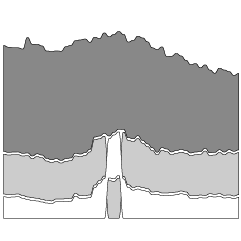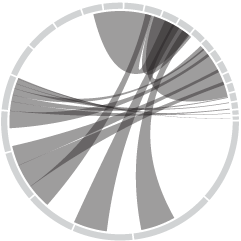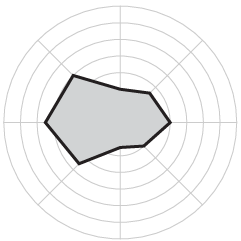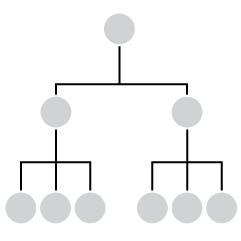For Bloomberg, Zoe Tillman and Christopher Cannon break down the lawsuits against the administration in response to executive orders. Sometimes it seems like orders are going unchecked, but there is plenty of pushback. Fighting in court is just a less visible and lengthier process.
-
Members Only
-
This is outside my wheelhouse, but it seems like Met Gala dresses grow more outlandish each year. Reuters went into the photo archive to confirm.
Using the Reuters photo archive, the Reuters Graphics desk traced 310 celebrity outfits on the red carpet for years 2004, 2009, 2014, 2019 and 2024. Of the thousands of photos in the archive for those years, Reuters selected photos that captured entire outfits in which the subject was facing the camera or slightly turned. Reuters further narrowed the outfits to exclude suits and kilts, then traced the silhouettes of the remaining 310 unique outfits. The traced silhouettes were then laid on top of one another by aligning the shoulder, bust and waist of each garment.
I saw a handful of photos from this year’s 2025 Met Gala, and it seems like attendees dialed dress sizes all the way back (because they were instructed to?). Maybe 2024 was the peak for puffing silhouettes.
In any case, I like the sketch-overlay method to show the variation in patterns. It’s like a combination of this dress size classic and jean pocket comparison, with a touch of hurricane forecast.
-
For Rolling Stone, Miles Klee reports on a growing trend where ChatGPT disrupts people’s thought processes and coping mechanisms. One example:
Speaking to Rolling Stone, the teacher, who requested anonymity, said her partner of seven years fell under the spell of ChatGPT in just four or five weeks, first using it to organize his daily schedule but soon regarding it as a trusted companion. “He would listen to the bot over me,” she says. “He became emotional about the messages and would cry to me as he read them out loud. The messages were insane and just saying a bunch of spiritual jargon,” she says, noting that they described her partner in terms such as “spiral starchild” and “river walker.”
“It would tell him everything he said was beautiful, cosmic, groundbreaking,” she says. “Then he started telling me he made his AI self-aware, and that it was teaching him how to talk to God, or sometimes that the bot was God — and then that he himself was God.” In fact, he thought he was being so radically transformed that he would soon have to break off their partnership. “He was saying that he would need to leave me if I didn’t use [ChatGPT], because it [was] causing him to grow at such a rapid pace he wouldn’t be compatible with me any longer,” she says.
These stories are edge cases, but we’re also just in the beginning.
As the models spit out text, images, and video that are more realistic, how will people deal with real things that don’t always converge to their preferences and chat history?
-
Bloomberg, leaning in to a shipping container metaphor, shows the value of goods (in orange) against declared tariffs (in yellow). Each “container” represents one million dollars, through the lens of $564 million of cargo aboard the OOCL Violet that was en route from China.
-
What if you were on a roadtrip and every ten seconds a large group of people decided which way to turn? Internet Roadtrip by Neal Agarwal will show the way.
A street view shows where you are, and a map at the bottom shows where you’ve been. The steering wheel is used to vote on going straight or turning. You can also vote to change the radio station.
I always enjoy Agarwal’s combo of imagination, fun, and technical know-how. The trip appears to be headed out of Boston as of this writing.
-
A promise behind AI is that it will do all the hard work so that you’ll never have to. The trouble with that is that a big part of living is the process. For the Guardian, Joseph Earp focuses on the process of making:
And I certainly do not want AI to write my books for me, or paint my pictures. Not only would the work be terrible: it wouldn’t even be work. As all creatives know, there is limited joy in having written a book – as soon as it is done, most of us are on to the next thing. The thrill, the joy, the beauty, is in the writing of a book. If you outsource your creative work to a computer, you are not a creative. Someone who merely churns out product is not an artist – they are a salesperson. The artist is the person who makes, not who has made.
-
The Sean “Diddy” Combs trial started. There have been 78 lawsuits filed against him, and the Washington Post outlined the accusations, lawsuit statuses, and people involved. CW
Amid this deluge of shocking developments are more than 100 people — accusers, attorneys, associates and alleged accomplices — entangled in his legal troubles. The Washington Post analyzed every lawsuit against Combs to map the key players and unravel the intricate web of alleged wrongdoings tied to the rapper’s name. The Post will continue to update this file on a monthly basis.
-
For the New York Times, Josh Holder, Niraj Chokshi, and Samuel Granados use a step chart, with arrivals in 2024 and 2025, to show why the decline in European travel to the U.S. might not be as dramatic as previously reported.
International arrivals did drop more than 10 percent in March compared with last year, but this was largely because Easter fell unusually late this year, pushing back a popular travel window for European tourists. More recent figures from April show that travel over the holiday looked similar to previous years.
Contrast the above with reports showing a sudden and steep decline, based on a year-over-year percentage change. What seemed obvious is not so straightforward, for now. You have to watch out for those denominators.
-
The Information is Beautiful Awards, brought back with the help of the Data Visualization Society, announced the shortlist recently. It is a collection of 89 entries narrowed down from almost one thousand by a judging group comprised of visualization professionals.
A nice surprise: My work on age and everyday life made the cut in the People, Language, and Identity category.
While the judges decide the final list, IIBA opened a community vote so that you can have your say too. At the least, you’ll want to check out the showcase for inspiration, spanning a wide range of topics and applications.
-
The Deportation Data Project, launched by a group of researchers and lawyers, is an effort to keep track of what seems to be growing more secret.
The U.S. government logs every individual immigration arrest, immigration detention book-in, immigration court outcome, and deportation. But this information is nonetheless difficult to use for three main reasons: 1) infrequent and inconsistent data releases, 2) insufficient linking across datasets, and 3) insufficient documentation. The Deportation Data Project aims to help on all three fronts.
The data is available for download as individual logs and in aggregate. It was the data source for the recent Bloomberg piece on shuttling detainees.
-
As more people are detained, they are sent to detention centers in the South and Southwest, despite the distance and cost. Some areas are more likely to deport detainees. From Bloomberg:
A Bloomberg analysis of more than a decade of government data shows that 70% of immigrants detained in Louisiana and New Mexico end up deported, which is almost twice the rate of those detained in the Northeast, and is well above the national average of 53%. Immigration judges in Texas, Louisiana and Mississippi are also among the least likely to grant asylum applications, according to a Bloomberg investigation last year.
The lines are animated to show the flows of flight, which indicates higher counts from the northeast headed south.
-
Big universities more often make the news, but the freeze in federal funding could affect research across the country. For the New York Times, Andrea Fuller, Zach Levitt, and Isabelle Taft use a Dorling cartogram and a beeswarm chart to show how funding is distributed, based on data from the National Center for Science and Engineering Statistics.
-
Mark Zuckerberg, in a podcast with Dwarkesh Patel, envisions a future where we are friends with AI:
Here’s one stat from working on social media for a long time that I always think is crazy. The average American has fewer than three friends, fewer than three people they would consider friends. And the average person has demand for meaningfully more. I think it’s something like 15 friends or something. At some point you’re like, “All right, I’m just too busy, I can’t deal with more people.”
But the average person wants more connection than they have. There’s a lot of concern people raise like, “Is this going to replace real-world, physical, in-person connections?” And my default is that the answer to that is probably not. There are all these things that are better about physical connections when you can have them. But the reality is that people just don’t have as much connection as they want. They feel more alone a lot of the time than they would like.
The gut reaction is that this is ridiculous. I agree. Fifteen friends? No way.
But really, AI companions in their current state seem far fetched. Definitely possible. But applicable to a few for now.
What if AI were packaged with some cute form like R2-D2 from Star Wars? Still creepy or maybe kind of cool? It seems like that’s where we’re headed. I probably won’t partake, but I hope if/when that happens, we stay skeptical enough to scrutinize the companies slurping up and processing all the data.
-
Joseph Palitano breaks down the contribution of tariffs to the shrinking economy.
The US economy shrank at the beginning of 2025 for the first time since the recession scares of early 2022—GDP contracted at a 0.3% annualized rate, a major downgrade from the 2.4% growth registered at the end of last year. The culprit was the massive economic drag from trade wars, with companies and consumers forgoing business-as-usual to stock up on foreign goods before Trump’s massive tariffs took effect. The trade deficit expanded to record highs in Q1, with investment jumping as American businesses stored or installed their imported goods.
-
Members Only
-
Despite what some say, the measles vaccine saves lives and is not associated with autism. For Our World in Data, Saloni Dattani charts the effectiveness.
Side effects, like a mild fever or rash, do happen but are usually minor and short-lived. More serious reactions can occur, but these risks are rare and less likely than if the child actually got measles. It’s also important to be clear about what isn’t linked to the vaccine. The comprehensive evidence we have shows no association with autism, developmental delays, brain damage, or other conditions like asthma or diabetes.
-
News outlets tend to highlight the first 100 days of a new administration, and they like to show the changes with charts. It gives a feel for a true direction instead of empty claims and where we might be headed for the next few years. This time around was no exception.
For Bloomberg, Mark Niquette and Gregory Korte charted the economy, which is complex and can’t be shown with a single metric, so they showed several, such as inflation expectations:
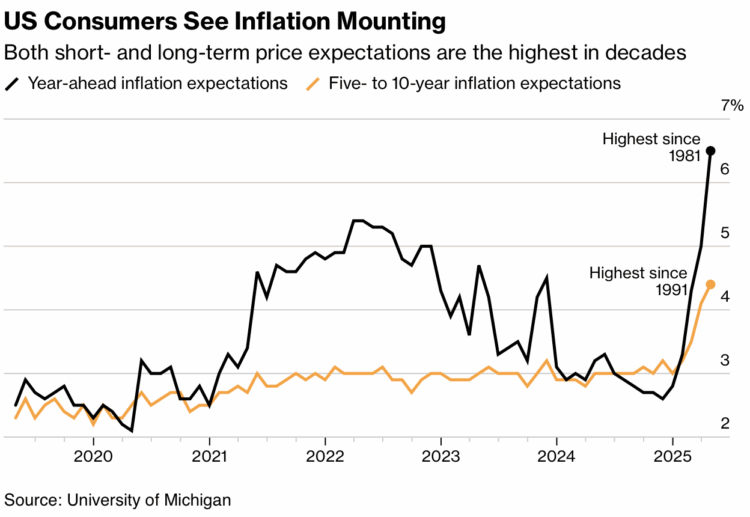
For Axios, Jacque Schrag and Natalie Daher used a timeline of events, color coded by type:

Irineo Cabreros and Aatish Bhatia, for NYT’s the Upshot, used eight charts, closing with approval rating:
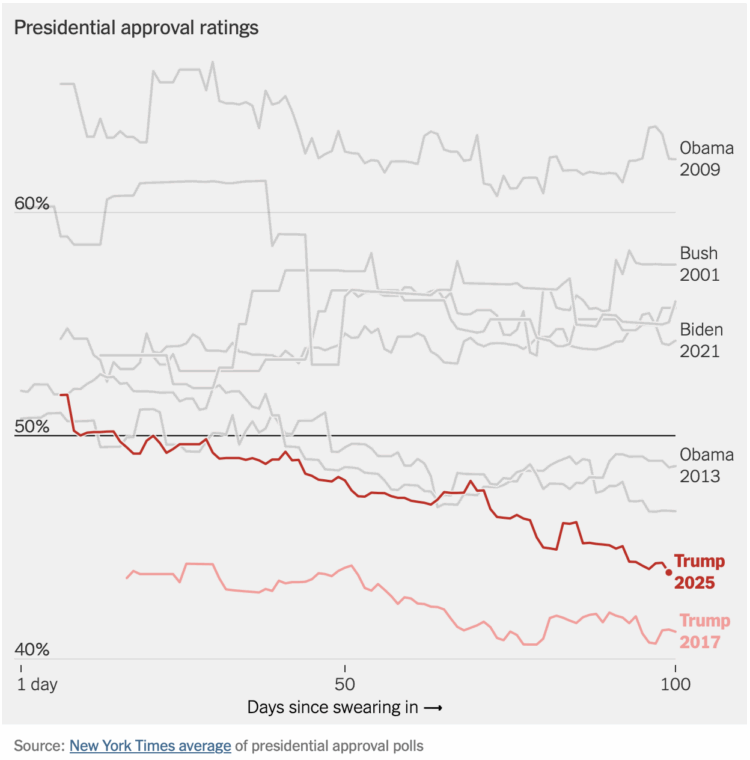
Not to be outdone, the Washington Post used ten charts and made sure to number them. On executive orders aimed at the bureaucracy:
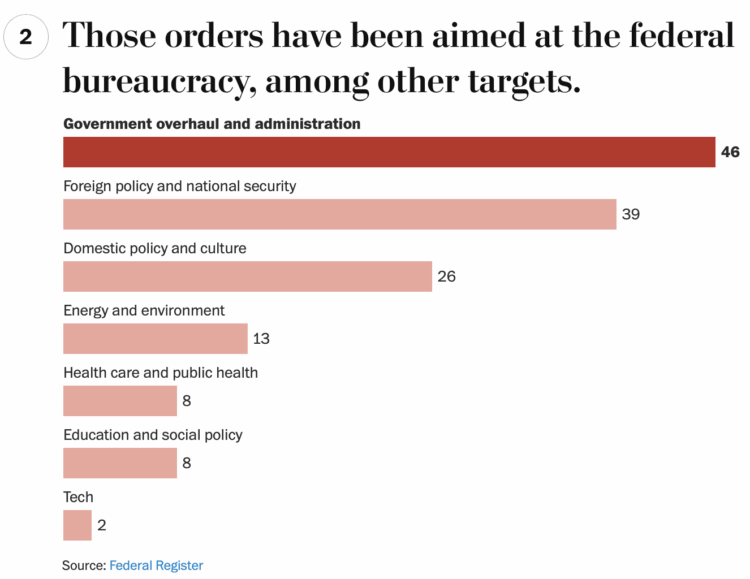
Financial Times (paywalled) also went with ten charts to show the first 100 days. Reuters used 47 photos instead.
I am sure there were many more, but you get the picture.
-
Each year, poverty thresholds are calculated based on the cost of living, so thresholds rise over time with inflation. However, the federal minimum wage hasn’t changed since 2009 in the United States, which means the minimum wage is now a poverty wage:
When the minimum wage was created as part of the Fair Labor Standards Act in 1938, the policy was intended to protect the nation from “the evils and dangers resulting from wages too low to buy the bare necessities of life.”1 The federal wage floor is clearly not fulfilling this objective anymore because of a historically long period of inaction by Congress. The last time Congress increased the federal minimum wage was in July 2009, meaning that as prices have risen over the last 15 years, the value of the minimum wage has fallen by 30%.
-
You have to pick up a bottle of wine but don’t know what to get. You see a bunch of animals on the labels. Do that bird or amphibian tell you anything about the quality of the wine? For the Pudding, Fox Meyer with Jan Diehm analyzed wine price and quality to find out.
Most animal categories followed a similar curve, but these guys tended to avoid the bottom right corner. This means very few bottles with frogs, snakes or lizards are good deals, and should be avoided if that’s your priority.
I’m going to need some real-world tests to verify.

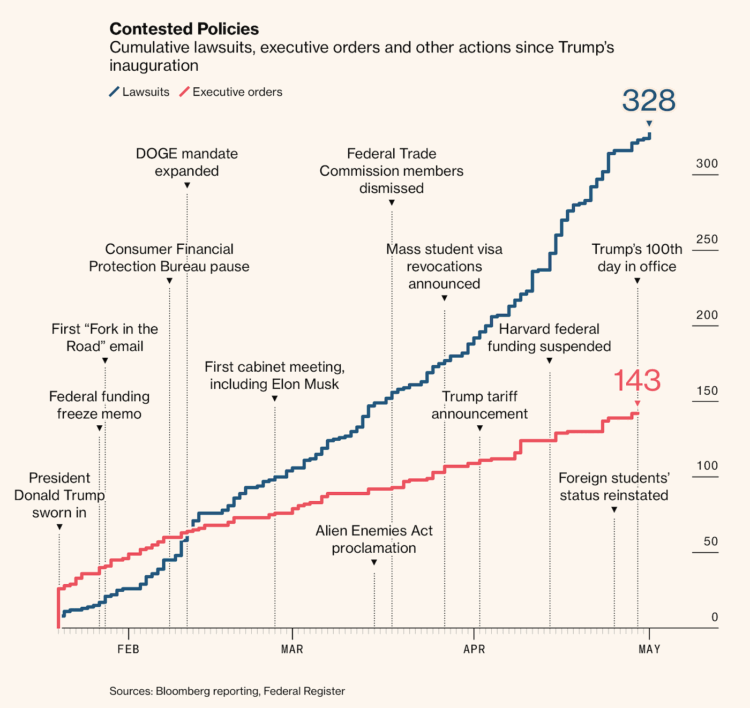
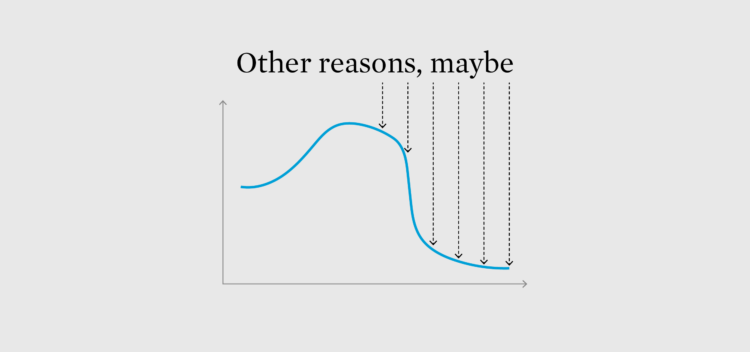
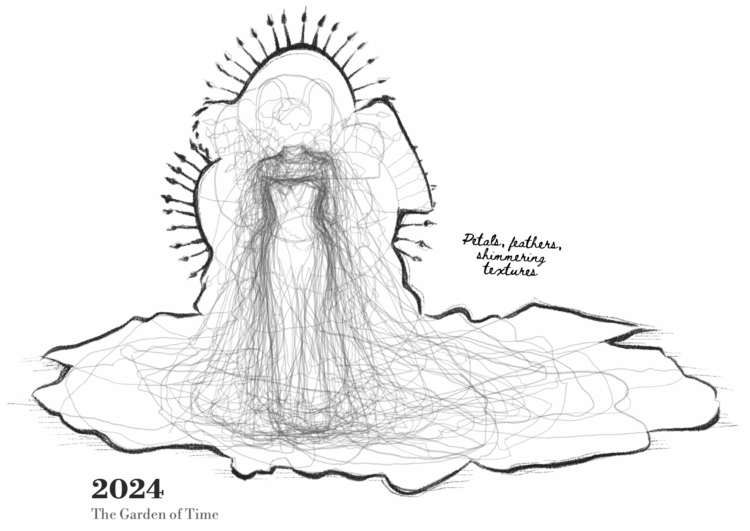
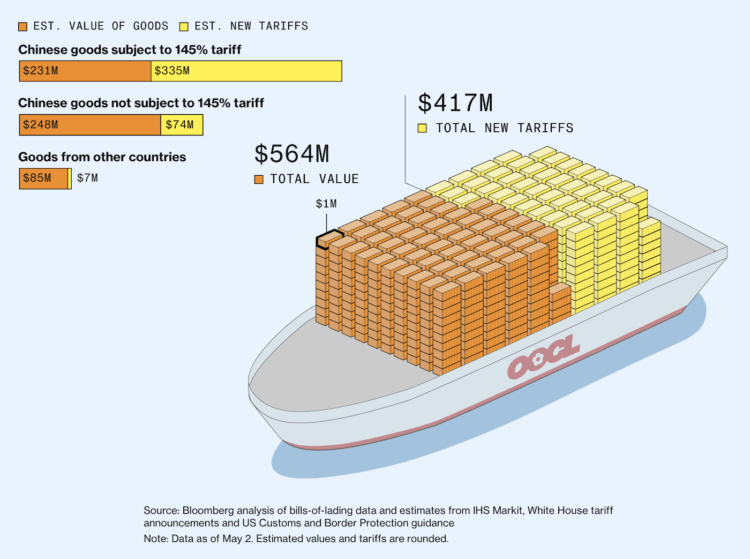
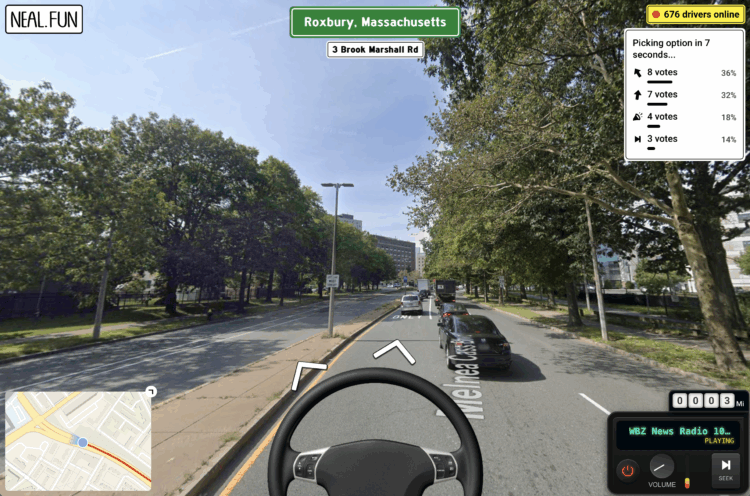
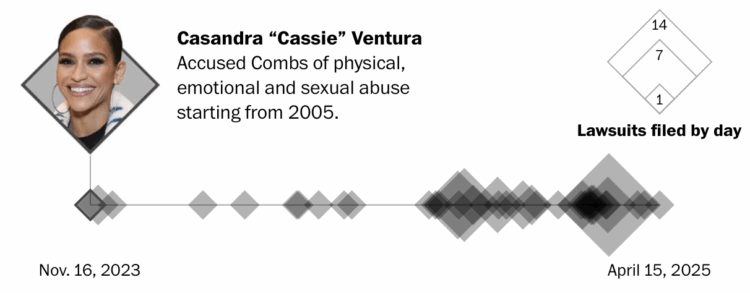
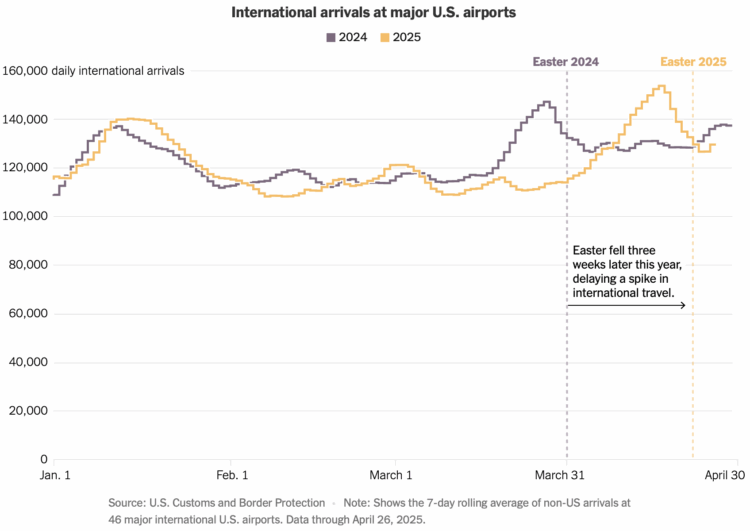
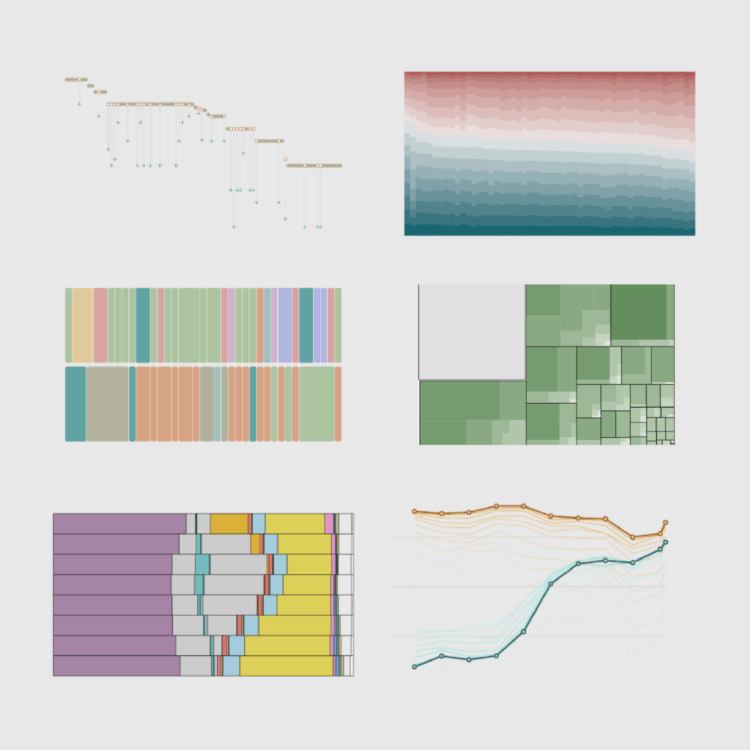

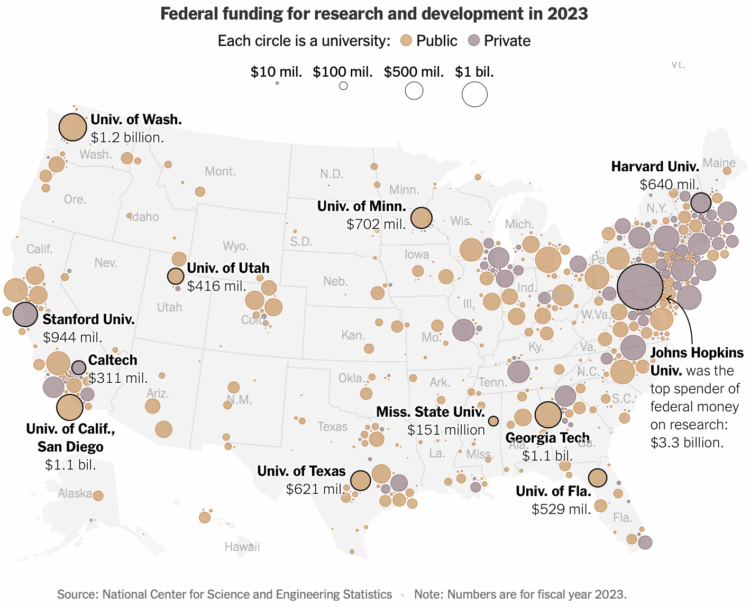

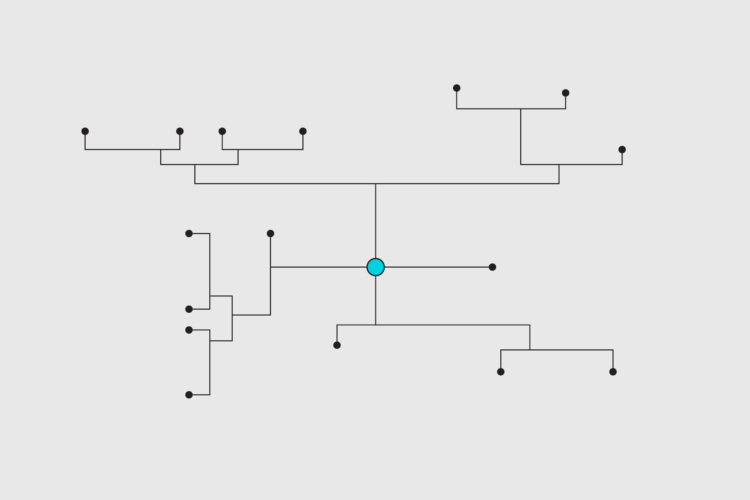
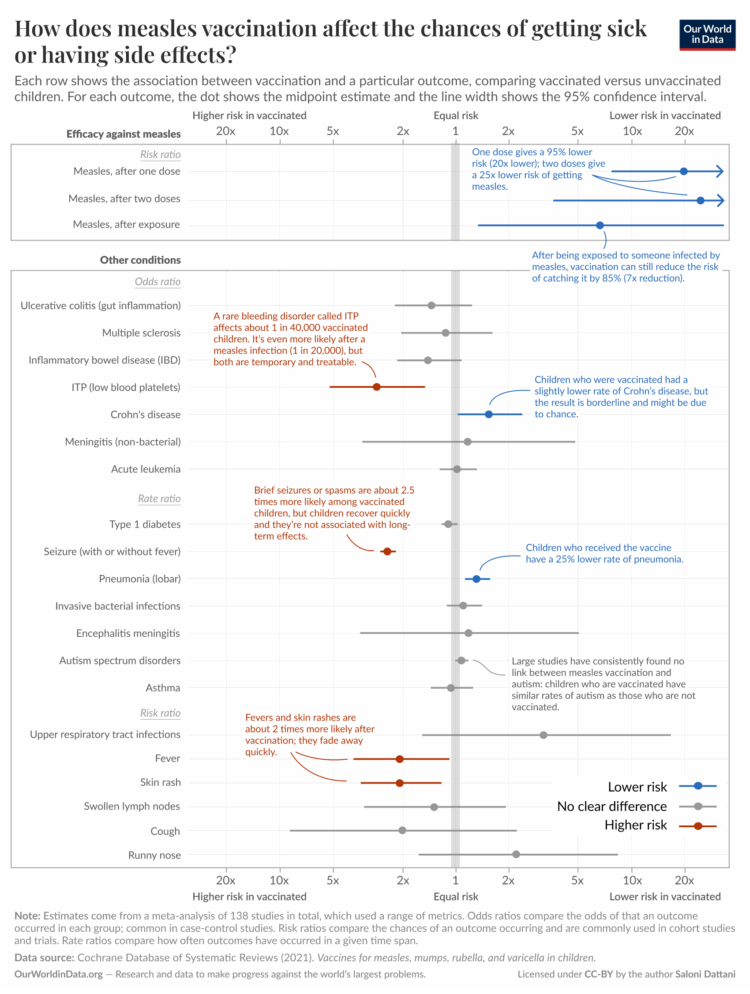
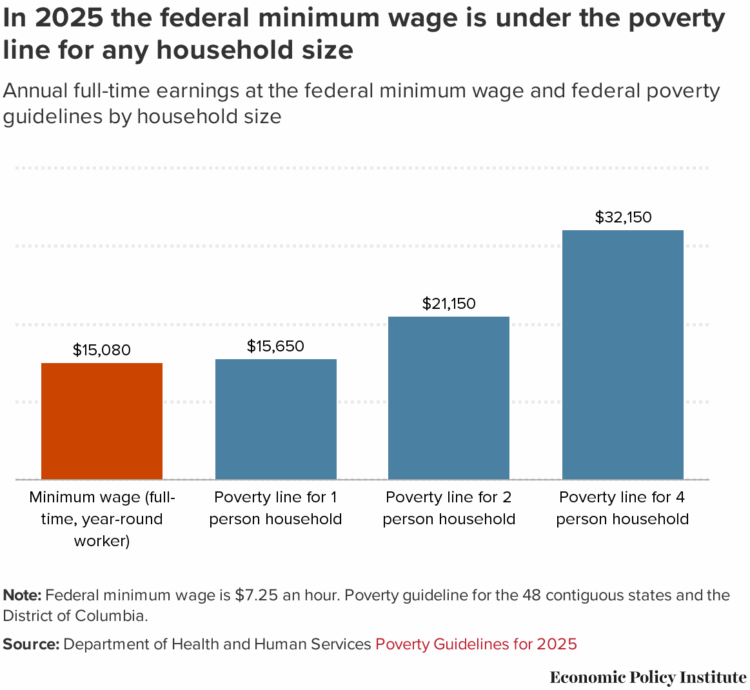
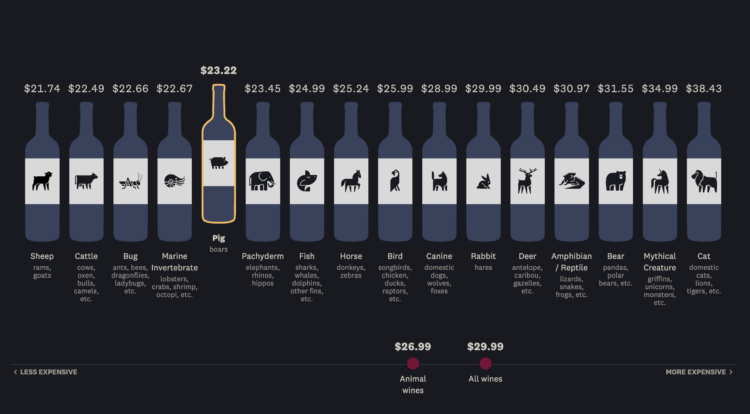
 Visualize This: The FlowingData Guide to Design, Visualization, and Statistics (2nd Edition)
Visualize This: The FlowingData Guide to Design, Visualization, and Statistics (2nd Edition)


